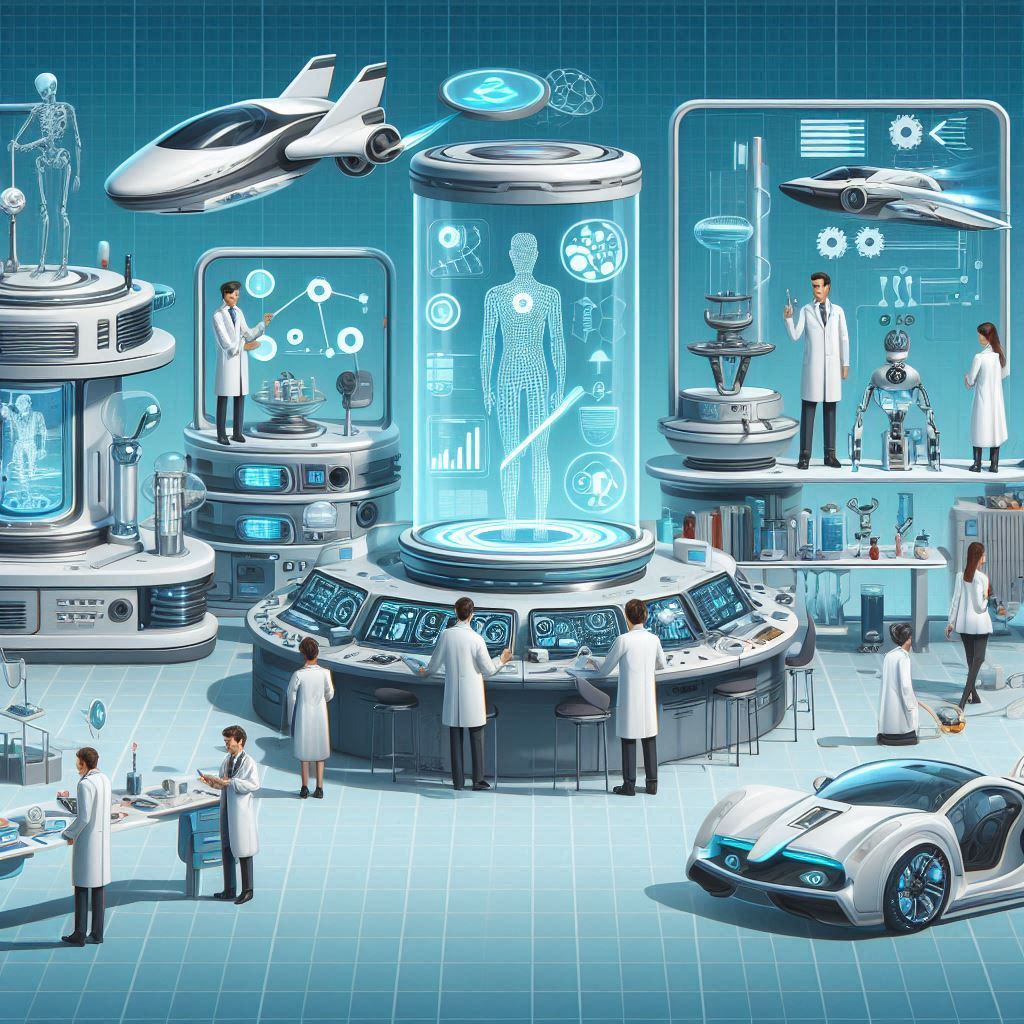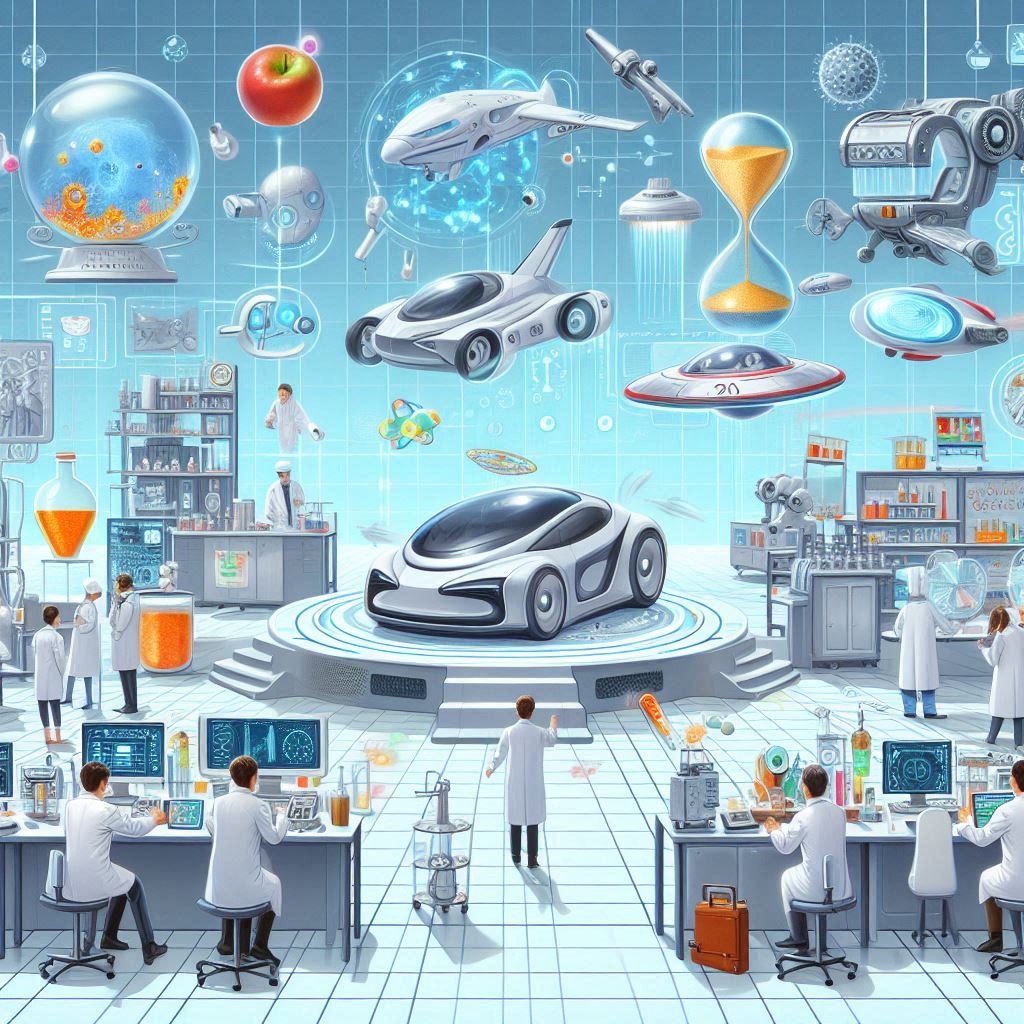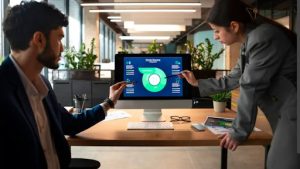Innovation has always been a driving force behind humanity’s progress, from the invention of the wheel to the development of the internet. But even in our modern world, there are still countless problems that need solving and processes that need improving. In this article, we’ll explore 14 things that need to be invented—ideas that, if realized, could have a profound impact on our lives and the world around us.
Here the 14 things that need to be invented

1. Eco-Friendly Plastic Alternatives
The world produces over 380 million tons of plastic every year, and nearly half of it is for single-use purposes. Most of this plastic ends up in landfills, oceans, or other environments, where it takes hundreds of years to decompose, posing a serious environmental threat.
We need to invent biodegradable materials that can completely replace plastic in packaging, manufacturing, and other industries. These materials should decompose safely and be easy to produce at scale.
Plant-based bioplastics are an early step in this direction. Companies like Cove have started creating water bottles from PHA, a type of biopolymer that biodegrades in marine environments. However, these innovations need to be scaled and made more cost-effective to fully replace traditional plastics.
| Plastic Waste Statistics | Annual Figures |
|---|---|
| Global plastic production | 380 million tons |
| Plastic waste that enters the ocean | 8 million tons |
| Plastic recycling rate | Less than 10% |
2. Universal Language Translator Earbuds
Globalization has made communication across different languages more common, but language barriers still pose significant challenges in international travel, diplomacy, and business.
Real-time language translator earbuds that use AI to provide instant, accurate translations in a wide range of languages could solve this. The technology should offer seamless conversation flow, reducing misunderstandings and creating more inclusive global interactions.
Google’s Pixel Buds currently provide a basic version of this concept, allowing for translation in around 40 languages. However, accuracy and real-time capabilities are still lacking, especially in dynamic, noisy environments.

3. Personalized Health Monitoring Implants
Problem: Health monitoring often depends on periodic doctor visits, which may miss early signs of developing issues. Chronic conditions like diabetes or heart disease could be better managed if real-time monitoring were available.
Solution: A small, non-invasive implant could track vital health metrics—such as blood sugar levels, cholesterol, or blood pressure—and send alerts to your smartphone or directly to your healthcare provider when irregularities are detected.
Statistical Backing: According to the World Health Organization (WHO), cardiovascular diseases are the leading cause of death globally, taking an estimated 17.9 million lives each year. Early detection through constant monitoring could drastically reduce this number by catching warning signs before they become fatal.
| Health Conditions Monitored | Current Monitoring Technology | Future Implants |
|---|---|---|
| Diabetes | Glucose monitors | Continuous, automatic |
| Heart disease | Blood pressure cuffs, ECG | Instant, real-time alerts |
4. Self-Cleaning Clothes
Problem: Laundry consumes significant time, water, and energy. According to the EPA, an average household uses 13,500 gallons of water annually on laundry alone.
Solution: Develop fabrics treated with nano-coatings that repel dirt, liquids, and odors. These clothes would require no traditional washing, only occasional spot cleaning, drastically reducing water consumption and energy use.
Example: Companies like Unbound Merino already make travel-friendly clothes that resist odors for days, but a fully self-cleaning garment would take this concept further, eliminating the need for washing entirely.
5. Affordable Water Desalination
Problem: Freshwater is becoming increasingly scarce. 1.1 billion people around the world lack access to clean drinking water, and climate change is exacerbating droughts in many regions.
Solution: Inventing a low-cost, energy-efficient desalination process that turns seawater into potable water could transform life in water-scarce areas. Current desalination technology is too expensive and energy-intensive to be used widely.
Statistical Case: A report from the United Nations states that by 2025, nearly half the world’s population will live in areas of high water stress. Affordable desalination could provide a sustainable solution to this impending crisis.
| Water Access Statistics | Current Figures |
|---|---|
| People without access to clean water | 1.1 billion people |
| Areas facing high water stress by 2025 | 50% of the world’s population |
6. Wireless Power Transfer
Problem: In our tech-heavy world, the clutter of cables is everywhere. Charging phones, laptops, and other devices requires physical connections, limiting convenience and mobility.
Solution: A system capable of wirelessly transferring power over a distance (without needing direct contact) would revolutionize the use of electronics. Imagine powering your devices as easily as you connect to Wi-Fi—without ever plugging in!
Existing Tech: Companies like WiTricity are experimenting with wireless power transfer for short distances, but this technology is still far from mainstream use.
7. Instant Learning Programs
Problem: Traditional education requires years to master a subject or skill. Many people also struggle with accessibility, whether due to geographic location or learning disabilities.
Solution: Develop a system that allows users to upload knowledge directly into the brain, rapidly mastering new skills, languages, or disciplines. While this sounds futuristic, neuro-technology is making strides in mapping the brain and understanding how to accelerate learning.
Real-life Progress: Elon Musk’s Neuralink is a pioneer in this field, working to create brain-machine interfaces that could one day allow users to upload and download data from their brain.
8. Pothole Detection and Auto-Filling Technology
Problem: Potholes cause billions of dollars in vehicle damage and pose safety risks. In the U.S. alone, it’s estimated that $3 billion is spent annually on pothole-related vehicle repairs.
Solution: A network of autonomous drones or AI-controlled road maintenance machines that detect and fill potholes as soon as they form would prevent further damage to roads and vehicles. These machines would scan roads daily and immediately address small cracks before they develop into hazardous potholes.
9. Smart Food Labels
Problem: Every year, an estimated 1.3 billion tons of food is wasted globally, often due to inaccurate expiration dates. Many people throw away food prematurely, fearing it has spoiled when it is still edible.
Solution: Smart labels that use biosensors to detect real-time freshness would give consumers a more accurate understanding of their food’s lifespan, reducing unnecessary waste and saving money.
10. Hyperloop Transport Systems
Problem: Traffic congestion and carbon emissions from traditional transportation are major global issues. Urban areas are especially affected by slow, inefficient transport options.
Solution: Hyperloop technology, which involves passenger pods traveling at near-supersonic speeds in a vacuum tube, could revolutionize long-distance travel, drastically cutting travel times and reducing environmental impact.
Case Example: Elon Musk’s Hyperloop projects are in the development stages, with companies like Virgin Hyperloop testing prototypes. A successful, scalable Hyperloop could make a trip from Los Angeles to San Francisco in under 30 minutes.
11. Emergency Natural Disaster Shelters
Problem: Natural disasters displace millions of people each year. After hurricanes, earthquakes, or floods, safe, sturdy shelters are often unavailable quickly enough.
Solution: Design and deploy rapid-inflation, self-assembling shelters that can be air-dropped into disaster zones. These shelters should be lightweight, easy to set up, and durable enough to withstand harsh conditions.
Case Study: Temporary shelters used during recent disasters, like Hurricane Maria in Puerto Rico, highlighted the need for fast, reliable shelter solutions in large-scale crises.
12. Memory-Enhancing Devices
Problem: Memory loss from conditions like Alzheimer’s disease affects millions of people, significantly reducing their quality of life.
Solution: Inventing a non-invasive, wearable device that helps stimulate and enhance memory retention in individuals could improve cognitive function in aging populations and those with neurological conditions.
Statistical Need: 50 million people worldwide are living with dementia, and that number is expected to grow to 82 million by 2030, according to the Alzheimer’s Association.
13. Sustainable Urban Farming Towers
Problem: As urbanization increases, cities are running out of space to grow food. Transporting food from rural areas into cities contributes to pollution and food insecurity.
Solution: Invent vertical farming towers that allow cities to grow food locally, using renewable energy sources and minimal water. These structures would use hydroponics or aeroponics to maximize efficiency and reduce the need for land.
Example: Singapore has already begun experimenting with vertical farming due to its land scarcity, but widespread adoption of this technology is still needed globally.
14. Anti-Gravity Belts
Problem: Transportation and logistics in urban areas are heavily dependent on ground vehicles, which contribute to traffic congestion and pollution.
Solution: An anti-gravity belt that allows people to float or fly for short distances could revolutionize personal transportation. These devices could be powered by advanced magnetic levitation technology or similar innovative propulsion methods.
Fiction to Reality: While anti-gravity technology is still mostly in the realm of science fiction, research into quantum levitation and other fields shows promise for future applications.
Conclusion
From affordable desalination to anti-gravity belts, the potential for invention in today’s world is immense. These ideas represent just a fraction of what’s possible. The future depends on the creativity, resourcefulness, and determination of inventors to solve the world’s most pressing challenges. All it takes is one breakthrough to change everything. So, that’s for today article on things that need to be invented. hope you like it. visit Pittythings for more.






